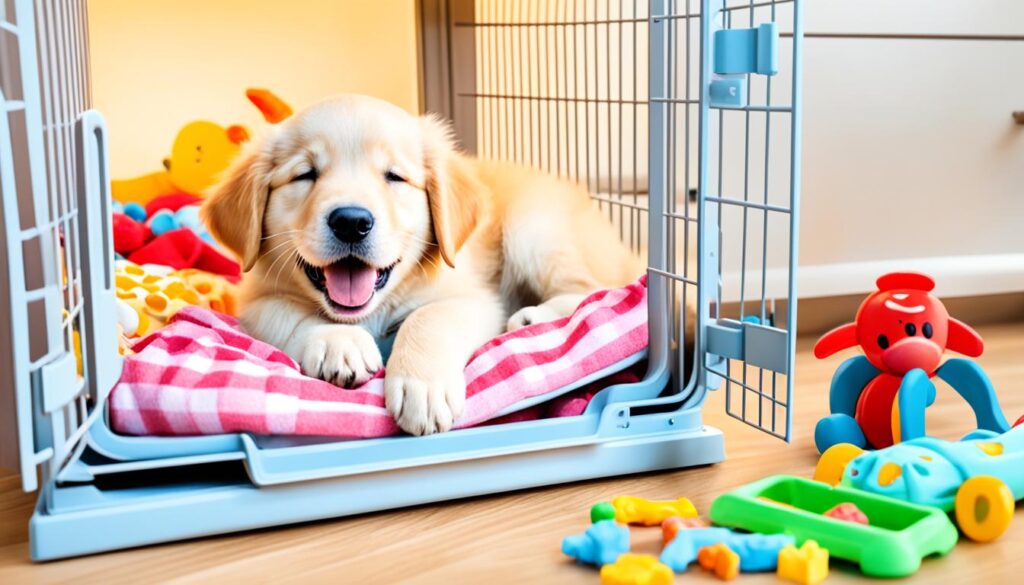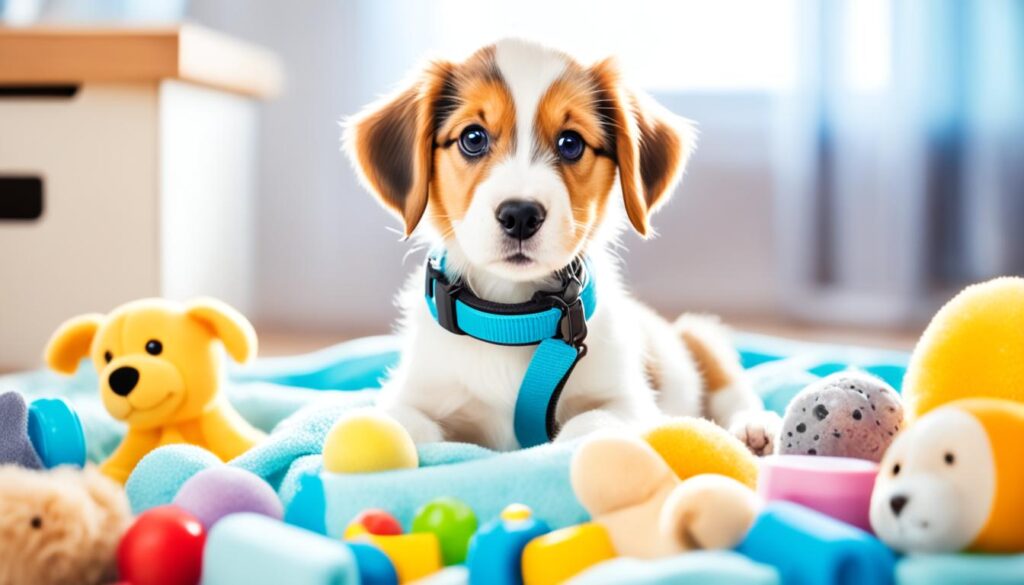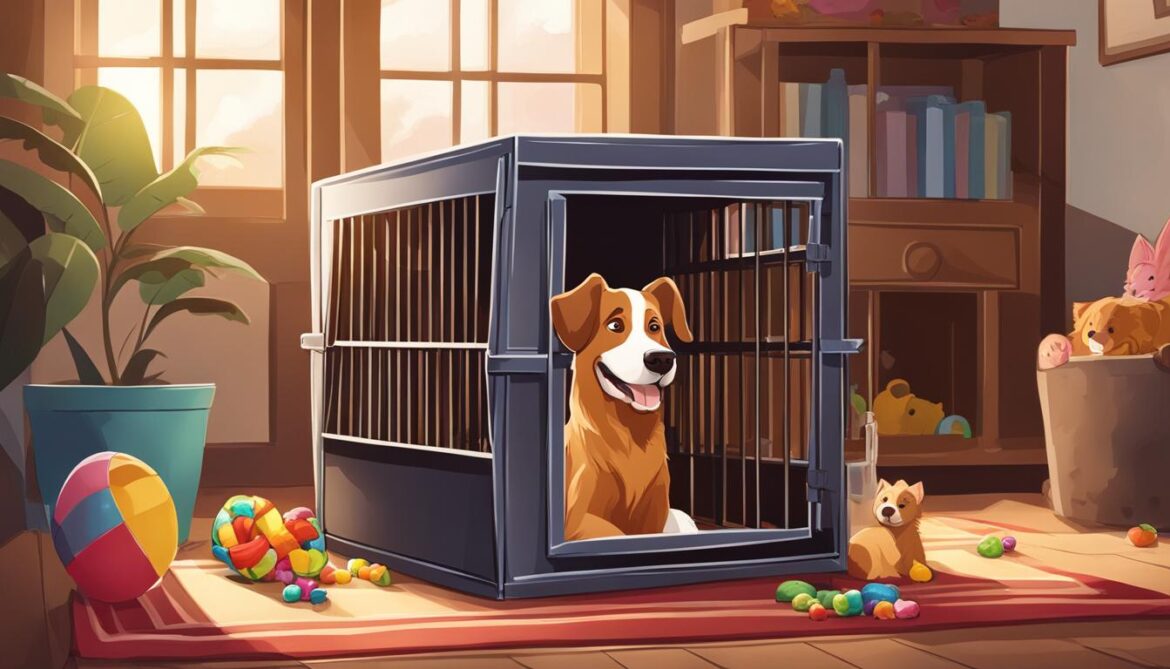Imagine coming home after a long, tiring day, only to be greeted by your furry companion, tail wagging with excitement, eagerly awaiting your presence. The love and joy your dog brings into your life is immeasurable, and you want nothing more than to ensure their well-being and happiness. One way to achieve this is through crate training.
Crate training is not just about confining your dog to a small space; it is about creating a safe haven, a den-like environment where they can feel secure and content. Just as humans crave a cozy retreat after a hectic day, dogs too benefit from having their own special place.
Whether you have a new puppy or an adult dog, crate training can prove to be an invaluable tool in their behavioral development and overall adjustment. When done correctly, it can enhance your dog’s sense of security, provide a structured routine, and promote desirable behaviors.
In this guide, we will explore the art of crate training dogs. From understanding the concept of crate training to effective methods and tips, we will equip you with the knowledge and tools necessary to create a harmonious living environment for both you and your furry friend.
Key Takeaways:
- Creating a safe and comfortable space through crate training can enhance your dog’s sense of security.
- Crate training can provide a structured routine and promote desirable behaviors in your dog.
- Understanding the concept and benefits of crate training is essential for successful implementation.
- Effective crate training methods and tips can help overcome challenges and ensure a positive experience for your dog.
- Establishing a consistent crate training schedule is crucial for your dog’s acclimation and long-term success.
Understanding Crate Training for Dogs
When it comes to dog crate training, many pet owners have questions and concerns. What is crate training? How does it benefit my dog? Is it cruel or necessary?
Let’s clear up these doubts and explore the concept of dog crate training. Crate training is a method that involves using a crate or enclosure as a safe space for your furry friend. Contrary to popular belief, crates are not meant to be confinement tools or punishment devices. Instead, they serve as a den-like environment that mimics a dog’s natural instinct to seek shelter and security.
A properly introduced and well-maintained crate can become a comfortable retreat for your dog—an area they associate with positive experiences and relaxation. It provides them with a sense of security and offers a designated space to call their own, even when you’re away or unable to directly supervise them.
“A crate is like a cozy bedroom for your dog, a safe haven where they can retreat, relax, and feel at ease.”
The benefits of crate training extend beyond creating a safe space for your dog. It can also assist in house training, preventing destructive behavior, and promoting better overall behavior. By introducing crate training as part of their routine, you’re setting them up for success and enhancing their well-being.
Proper crate training involves patience, consistency, and positive reinforcement. Over time, your dog will learn to appreciate their crate and view it as a personal sanctum. Remember, every dog is unique, and the pace of training will differ. Some dogs may acclimate quickly, while others may require more time and gradual exposure.

In the next section, we’ll dive into the specific steps involved in crate training puppies, so you can provide them with the best start in their crate training journey!
Crate Training for Puppies: Getting Started
If you have a new puppy, crate training is an essential skill to teach them. Not only does it provide a safe and comfortable space for your furry friend, but it also helps with house training and prevents unwanted behavior. Follow these steps to get started with crate training for puppies:
- Introduce the crate gradually: Start by placing the crate in a quiet area of your home, preferably where your family spends the most time. Leave the crate door open and allow your puppy to explore it at their own pace. Encourage them with treats and praise when they show interest in the crate.
- Make it cozy: Line the crate with a soft blanket or bedding to create a comfortable sleeping area for your puppy. You can also add a favorite toy or chew to make it more inviting. The goal is to make the crate a place where your puppy feels secure and at ease.
- Use positive reinforcement: When your puppy voluntarily goes into the crate, reward them with treats and praise. This helps to create a positive association with the crate and encourages them to view it as a desirable space.
- Start with short time intervals: Begin by closing the crate door for short periods while you are present. Gradually increase the duration as your puppy becomes more comfortable. Always provide them with plenty of praise and rewards when they remain calm and relaxed in the crate.
- Establish a routine: Set a consistent schedule for crate time, including regular meals, playtime, and bathroom breaks. This helps your puppy to anticipate and accept their time in the crate as part of their daily routine.
Remember, patience and consistency are key when crate training a puppy. It’s important to introduce the crate in a positive and gradual manner to ensure your puppy feels secure and content. With time and practice, your puppy will come to appreciate their crate as their own personal space.
“Crate training provides a safe and secure environment for puppies to relax and rest. It also aids in house training and reduces separation anxiety.”
Next, we will explore effective crate training methods and tips to make the process even smoother. Stay tuned!

Effective Crate Training Methods and Tips
When it comes to crate training your dog, employing the right methods and techniques can significantly enhance the effectiveness of the training process. Here, we will provide you with a range of valuable crate training tips to ensure a smooth and positive experience for both you and your furry friend.
Tips for Successful Crate Training
1. Introduce the crate gradually: Allow your dog to explore the crate at their own pace. Start by leaving the crate door open and placing treats or toys inside to encourage them to enter on their own.
2. Use positive reinforcement: Reward your dog with treats, praise, and affection when they make progress with their crate training. This will create positive associations and motivate them to continue their good behavior.
3. Make the crate inviting: Add comfortable bedding, toys, and familiar items like your dog’s favorite blanket or a piece of your clothing that carries your scent. This will make the crate feel like a cozy den where they can relax and feel secure.
4. Gradually increase crate time: Begin by leaving your dog in the crate for short periods, gradually extending the duration. This will help them get accustomed to spending more time in the crate without feeling anxious or stressed.
5. Stick to a consistent schedule: Establish a routine for meals, potty breaks, and crate time. Dogs thrive on predictability, and maintaining a consistent schedule will help them feel secure and understand what is expected of them.
6. Ignore whining or barking: Avoid giving in to your dog’s demands or letting them out of the crate when they whine or bark. This may reinforce the behavior and make crate training more challenging in the long run.
Remember, crate training is a gradual process that requires patience and consistency. Don’t rush your dog’s progress, as every pup has their own learning pace. With time and positive reinforcement, your furry friend will learn to view their crate as their safe haven.
Common Challenges and Solutions
During the crate training process, you may encounter some common challenges. Here are a few solutions to help you navigate these obstacles:
| Challenge | Solution |
|---|---|
| Your dog whines or barks in the crate | Ignore the behavior and wait for your dog to calm down before letting them out. Reward quiet behavior with treats and praise. |
| Your dog is reluctant to enter the crate | Use treats or toys to lure your dog into the crate. Gradually increase the distance between the treat and the crate to encourage them to go inside. |
| Your dog has accidents in the crate | Ensure your dog has regular potty breaks and limit access to water before crating. Clean accidents with an enzymatic cleaner to eliminate odors. |
| Your dog becomes anxious or restless in the crate | Adjust the crate location to a quieter area and provide calming aids like calming sprays or music. Practice crate training exercises to gradually build your dog’s tolerance. |
By addressing these challenges with patience and the right techniques, you can overcome any hurdles and achieve effective crate training results.
Now that you are equipped with these helpful crate training tips and solutions, you can embark on your crate training journey with confidence. Remember to remain consistent, positive, and patient throughout the process, and soon your dog will view their crate as a safe and comfortable space they can retreat to.
Creating a Crate Training Schedule
Establishing a crate training schedule is essential for effectively acclimating your dog to their crate. A consistent routine provides structure and reassurance, helping your furry friend feel secure and confident in their new space.
Why is a crate training schedule important?
Having a crate training schedule not only helps your dog develop positive associations with their crate but also aids in house training and preventing unwanted behaviors. It establishes boundaries and promotes good behavior by teaching your dog when it’s appropriate to relax and settle in their crate.
Here are some key steps to help you create an effective crate training schedule:
- Consistency: Set specific times for crate sessions, including meal times, potty breaks, playtime, and rest periods. Aim to follow the schedule as closely as possible each day, ensuring your dog knows what to expect.
- Incremental Introductions: Start by gradually introducing your dog to their crate, allowing them to explore and familiarize themselves with it in positive and controlled sessions. Begin with short periods and slowly increase the duration over time.
- Mealtime Routine: Incorporate feeding times into your crate training schedule. Encourage your dog to enter the crate willingly by placing their food bowl near the crate entrance or inside the crate itself. This helps create positive associations with the crate.
- Potty Breaks: Schedule regular potty breaks, ensuring your dog has enough time outside of the crate to relieve themselves. Integrate these breaks into your crate training schedule to avoid accidents and promote proper house training.
- Play and Exercise: Allocate specific time slots for play and exercise outside of the crate. Engaging in physical activity helps your dog burn off excess energy and promotes a healthy lifestyle.
- Quiet Time: Dedicate periods of rest and relaxation within their crate. Include calming activities such as puzzle toys or soothing music to create a serene environment that encourages your dog to settle down.
Remember, every dog’s training needs are unique, so adapt the crate training schedule to suit your dog’s personality and energy levels. Stay patient, consistent, and positive throughout the process to ensure the best results.
Conclusion
Crate training offers numerous benefits for dogs and their owners. By implementing this method with patience, consistency, and positive reinforcement, you can ensure a happier and well-adjusted pet.
One of the key advantages of crate training is providing a safe and secure space for your dog. Just like humans, dogs need a retreat where they can feel calm and protected. A crate serves as their den, a cozy space they can call their own.
Crate training also aids in housebreaking and preventing destructive behavior. When properly trained, your dog will view their crate as a designated spot for rest and relaxation, reducing the likelihood of accidents or damaging your home when left unsupervised.
Additionally, crate training promotes better behavior when traveling or during vet visits. Your dog will already be accustomed to being in confined spaces, making it easier to transport them and ensuring a smooth experience during vet check-ups or trips.
